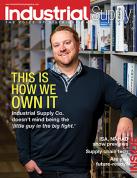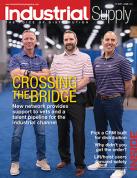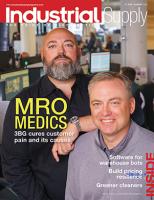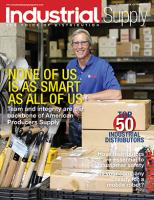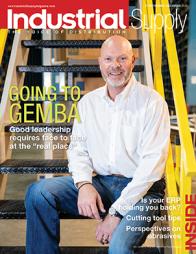Navigating new material selection in the hose and belt industry: Adapting to emerging challenges
By Mathew Augustine
The hose and belt industry stands at a pivotal crossroads, where traditional practices must evolve to meet the demands of a rapidly changing world. As we navigate through a landscape marked by economic, environmental, and technological shifts, the choices we make in material selection will define our path forward.
 By innovating the ways in which hoses, belts and other industrial products are manufactured, we can adapt and ensure a more sustainable and resilient future. In this article, we explore some of the challenges that lie ahead, and how we can begin to overcome them through the use of new and alternative manufacturing materials and technology innovation.
By innovating the ways in which hoses, belts and other industrial products are manufactured, we can adapt and ensure a more sustainable and resilient future. In this article, we explore some of the challenges that lie ahead, and how we can begin to overcome them through the use of new and alternative manufacturing materials and technology innovation.
Material Shortages
Global shortages of key materials, exacerbated by the pandemic and geopolitical issues, have forced the industry to seek alternative materials and innovate in material science to maintain production levels. Continental’s ContiTech team, for example, is now using High Energy Polyester (HEP) in place of nylon in certain belting applications and polyketone technology, a new, green polymer, in other applications.
HEP is easier to procure, is more sustainable, and has the same or better performance in select applications, while nylon’s limited production capacity has led to double-digit price increases over recent years. Because HEP is more readily available than nylon, it also provides supply chain, price and lead time stability, all of which lead to more reliable production and delivery schedules.
In addition, less energy is used in the production of HEP, reducing the CO2 – and thereby the carbon footprint – of HEP material development. The sustainability benefits of HEP are further demonstrated by the fact that HEP is recyclable, making this beneficial material part of the circular economy that is integral to sustainability in manufacturing.
Continental is also deploying the use of polyketone technology, a new, green polymer composed with carbon monoxide and olefins, in place of traditional nylon products. Using this material reduces the carbon footprint. It also responds better to humidity, and is more stably priced. Regarding its performance, products using polyketone perform the same or better than traditional nylon products.
Rising labor costs, the lack of available, skilled workers and inflation are squeezing profit margins. Investing in automation and efficient production processes can help offset these costs while maintaining quality and competitiveness.
It is a common misconception that automation takes jobs away from workers when, in fact, automation plays an important role in helping fill gaps in the workforce, which can include jobs that are difficult to fill, or automating repetitive tasks so that employees can focus on more complex and rewarding work.
At our Wahpeton, North Dakota manufacturing plant, for example, employees used to trim belts by hand. Recognizing that this task could be automated to improve precision and safety, the manufacturing team designed a trimmer machine. Now, this process is completed at the press stage, post-vulcanization, to the correct specifications, and workers can shift their attention to safer and more meaningful work.
Geopolitical Conflicts
Geopolitical tensions have disrupted supply chains, leading to increased costs and uncertainty in material availability. Ongoing promises of tariffs, even levied against neighboring countries, create further uncertainty, especially when it comes to pricing and supply chain. Companies must diversify their supply sources and develop strategies to mitigate these risks.
Climate Change
The impact of climate change is undeniable, with extreme weather events affecting production and supply chains. The industry must adopt resilient practices and materials that can withstand these environmental challenges.
These challenges can be seen across industries and all point to the need for outside of the box thinking and industry-changing innovations. Using technology to enhance product transformation is the way of the future and is already in process through the following:
- Artificial Intelligence (AI): AI is revolutionizing product design and manufacturing processes. By leveraging AI, companies can optimize material selection, predict maintenance needs, and enhance product performance.
- Data Center Market and Cooling Technology: The exponential growth of data centers has increased the demand for advanced cooling technologies. Materials that enhance thermal management and energy efficiency are crucial in this sector.
- Hydrogen Technology: As the world shifts towards cleaner energy, hydrogen technology is gaining traction. The hose and belt industry must develop materials that can safely and efficiently handle hydrogen, supporting the transition to a hydrogen economy.
Sustainability is a pressing topic for manufacturers of all types of industrial products, but in many cases, manufactures are still looking at sustainability as a box to check on a report rather than implementing truly impactful institutional change. To deliver true sustainability gains, we must look at our materials and processes. For example:
- Product Circularity: The principles of reduce, reuse and recycle are becoming integral to material selection. By designing products with circularity in mind, the industry can minimize waste and environmental impact. This includes using recycled materials, designing for disassembly, and implementing take-back programs.
- Material Resilience: ContiTech’s innovative ContiClean technology exemplifies the industry’s move toward longer-lasting, more sustainable materials. This technology reduces material buildup, extending the lifespan of hoses and belts and reducing maintenance needs and waste.
It’s pertinent that the hose and belt industry embrace the aforementioned challenges, opportunities and solutions with a forward-thinking approach. By prioritizing sustainable materials, leveraging advanced technologies, and adopting resilient practices, we can navigate the complexities of the modern world and build a more sustainable future. The choices we make today in material selection will not only define our industry’s success, but also contribute to a healthier planet for generations to come.

Mathew Augustine is the head of product development at Continental, with over 20 years of experience in tires, hose, coatings and polyurethane industries.







